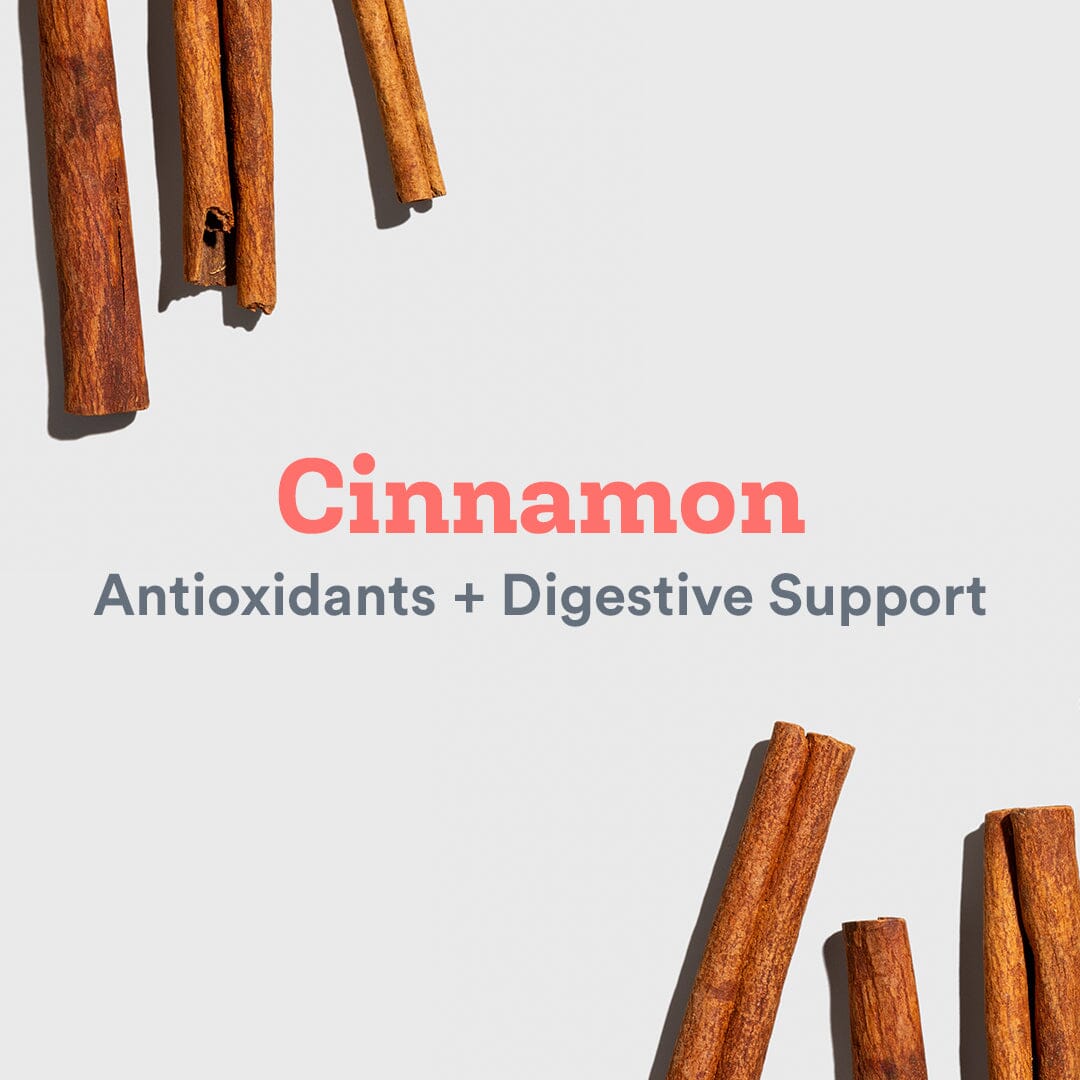
Scientific/Latin name: Cinnamomum verum
Also known as:
- Cinnamomum cassia (cassia or Chinese cinnamon, the most common commercial type in the USA)
- C. burmannii (Korintje, Padang cassia, or Indonesian cinnamon)
- C. loureiroi (Saigon cinnamon, Vietnamese cassia, or Vietnamese cinnamon)
- C. verum (Sri Lanka cinnamon, Ceylon cinnamon or Cinnamomum zeylanicum)
- C. citriodorum (Malabar cinnamon)
Native to: Sri Lanka (formerly Ceylon), the Malabar Coast of India, and Myanmar (Burma)
Parts used: Bark
Top benefits: Digestive & Gut support and Antioxidant rich

Cinnamon. From tree bark to common kitchen spice with health benefits.
Cinnamon is an incredible ingredient that we have in our kitchen and use regularly, often with no knowledge (or intention) that our use is medicinal - but the beautiful surprise is that it is. A warming spice with a sweet aroma, Cinnamon is one of the oldest spices in the world, with a long history of use for its healing properties in many forms of herbal and traditional medicine.
Cinnamon sticks are rolled layers of the dried bark of the tree they come from. This super-spice grows in a number of tropical regions around the world, and over 200 species have been identified, but only two main types are sold commercially: (1) Ceylon Cinnamon, also called ‘True Cinnamon’ (Cinnamon Verum or Cinnamon Zeylanicum) (although this doesn’t mean that other types of Cinnamon are any less real!), which is soft and brittle, more expensive and less commonly available in North America, and (2) Cassia Cinnamon (Cinnamomum aromaticum), the darker, harder variety which is what is available at your local grocery store.
Researchers have determined that health benefits can be obtained from this spice in a variety of forms: directly from its bark (for example, through an infusion), from the ground spice (which is the bark ground to a powder), as an essential oil or in extract form. In all cases, most of Cinnamon’s health benefits are derived from its phenolic compounds, including flavonoids, which are highly researched due to their antioxidant properties. In addition to its medicinal properties described below, Cinnamon is also nutrient-rich, high in dietary fibre and manganese, also provides smaller amounts of calcium and iron, and its essential oil offers antimicrobial and antifungal properties.
Health Benefits of Cinnamon
Antioxidants
Antioxidant compounds present in plants play a vital, health-protecting role in human life. Antioxidants have been shown to help protect against various metabolic diseases, heart disease, brain disorders and age-related syndromes, as they help the body combat cellular damage caused by free radicals (reactive chemicals containing oxygen).
Cinnamon powder, extracts and oil have all been found to exhibit free radical-scavenging activities and antioxidant properties, attributed to a number of phenolic and flavonoid compounds which have been isolated from this spice.(1, 2) In a number of studies, when analyzed against different spices, Cinnamon exhibited the highest or among the highest level of antioxidant activity.(3, 4)

Digestive & Gut Support
In Traditional Chinese Medicine (TCM), Cinnamon is considered an herb that is ‘hot’ in nature and used to warm the interior, expel cold and promote circulation of Qi (vital energy or life force) and bodily fluids. Key gastrointestinal conditions for which cinnamon is used include abdominal pain, diarrhea and loss of appetite.
In Ayurvedic medicine, cinnamon is also a warming spice, traditionally used to rev up digestion and for bowel complaints such as indigestion, gas, diarrhea and vomiting. It’s often used in ayurvedic herbal preparations with other warming herbs and spices like ginger and black pepper to enhance the bioavailability of other herbs.
Similarly, Cinnamon is traditionally used in herbal medicine for digestive disturbances and complaints such as mild spasms and cramps in the gut, bloating, and relief from gas and flatulence.
The health research presented in this article is for informational use only. It is not a replacement for professional health advice and should not be construed as a recommendation of specific products. The products sold on this website are not intended to diagnose, treat, cure, or prevent any disease. This information does not provide dosage or format recommendations or possible drug interactions, and accordingly, should be used with the advice of a qualified health care practitioner.
